Introduction to High-Protein Pescatarian Meal Prep
The pescatarian diet, which includes fish and seafood but excludes other meats, offers a range of health benefits, particularly when it comes to protein intake. Protein is essential for muscle repair, immune function, and overall health. For pescatarians, seafood provides an excellent source of high-quality protein, while plant-based options add diversity and nutritional balance.
Meal prepping is a valuable strategy for ensuring that your meals are rich in protein, well-balanced, and convenient. By planning and preparing your meals in advance, you can meet your protein needs more effectively, save time during busy weekdays, and avoid the temptation of less healthy options. This guide will explore a variety of high-protein pescatarian meal prep ideas, helping you stay on track with your dietary goals.
Key Protein Sources in a Pescatarian Diet
High-Protein Seafood Options: Salmon, Tuna, Shrimp, etc.
Seafood is a powerhouse of protein, and incorporating it into your meal prep can significantly boost your protein intake. Salmon is one of the best options, providing around 22 grams of protein per 3-ounce serving, along with heart-healthy omega-3 fatty acids. Tuna, whether fresh or canned, is another excellent source, offering about 20 grams of protein per 3-ounce serving. Shrimp is also rich in protein, delivering about 18 grams per 3-ounce portion. These seafood choices are not only high in protein but also versatile, making them perfect for a variety of dishes.
Plant-Based Proteins: Lentils, Beans, Tofu, and Quinoa
In addition to seafood, plant-based proteins play a crucial role in a balanced pescatarian diet. Lentils and beans are excellent sources of protein and fiber, with lentils providing about 18 grams of protein per cooked cup and black beans offering around 15 grams. Tofu, made from soybeans, is another versatile option, with about 10 grams of protein per 3-ounce serving. Quinoa, a complete protein, provides about 8 grams per cooked cup and can be used as a base for salads, bowls, or side dishes.
Combining Seafood and Plant-Based Proteins for Optimal Nutrition
For optimal nutrition, it’s beneficial to combine seafood with plant-based proteins in your meals. This approach not only increases the overall protein content but also ensures you’re getting a wide range of essential amino acids, vitamins, and minerals. For example, pairing grilled salmon with a quinoa and black bean salad creates a nutrient-dense meal that’s rich in protein, fiber, and healthy fats. By mixing and matching different protein sources, you can keep your meals interesting and nutritionally balanced.
Tools and Techniques for Effective Meal Prep
Essential Kitchen Tools for High-Protein Meal Prep
Having the right kitchen tools can make high-protein meal prep more efficient and enjoyable. Essential tools include a sharp chef’s knife for cutting seafood and vegetables, a food processor for blending sauces and marinades, and a set of non-stick pans for cooking delicate fish. A digital food scale is also useful for portioning out protein servings accurately, ensuring that you meet your dietary goals. Additionally, high-quality meal prep containers with compartments can help you organize and store your meals effectively, keeping them fresh throughout the week.
Batch Cooking and Storage Tips for Protein-Rich Meals
Batch cooking is a great way to ensure you have high-protein meals ready to go throughout the week. Start by preparing large quantities of seafood like baked salmon, grilled shrimp, or seared tuna, and pair them with pre-cooked grains and vegetables. Store your meals in airtight containers to maintain freshness and prevent cross-contamination. Cooked seafood typically lasts 3-4 days in the refrigerator, while plant-based proteins like lentils and quinoa can last up to 5 days. For longer storage, consider freezing portions, especially for meals like soups or stews that reheat well.
Portion Control Strategies for Balanced Nutrition
Proper portion control is key to maintaining balanced nutrition in a high-protein pescatarian diet. When meal prepping, aim for a protein source that makes up about a quarter of your plate, with the rest filled with vegetables and whole grains. Using a food scale or measuring cups can help you portion your meals accurately. For example, a typical meal might include 3-4 ounces of fish, half a cup of quinoa, and a generous serving of vegetables. This balance ensures that you’re getting enough protein while also consuming adequate fiber, vitamins, and minerals from plant-based foods.
High-Protein Breakfast Ideas
Smoked Salmon and Scrambled Egg Bowls
Smoked salmon and scrambled eggs make for a quick, protein-packed breakfast that’s both delicious and nutritious. Start by scrambling eggs, which provide about 6 grams of protein each. Top the eggs with slices of smoked salmon, which adds an additional 5 grams of protein per ounce. To round out the meal, add a handful of spinach or arugula for extra vitamins and a drizzle of olive oil for healthy fats. This combination creates a satisfying breakfast bowl that’s ready in minutes and provides sustained energy throughout the morning.
Greek Yogurt Parfaits with Chia Seeds and Nuts
Greek yogurt is an excellent high-protein breakfast option, offering about 10 grams of protein per 100 grams. For a nutritious parfait, layer Greek yogurt with chia seeds, which add omega-3 fatty acids and an additional 4 grams of protein per ounce. Top with a mix of nuts like almonds and walnuts for added crunch and protein, and a drizzle of honey for natural sweetness. This parfait is easy to prep the night before, making it a convenient grab-and-go option that’s both filling and delicious.
Quinoa Breakfast Porridge with Almonds and Berries
Quinoa isn’t just for lunch or dinner—it can also make a hearty and protein-rich breakfast porridge. Cook quinoa in almond milk or your preferred plant-based milk, and sweeten with a touch of maple syrup or honey. Stir in sliced almonds, which provide about 6 grams of protein per ounce, and top with fresh berries for added flavor and antioxidants. This warm, comforting porridge is a great way to start the day with a balanced meal that’s high in protein and fiber.
Protein-Packed Lunch Ideas
Tuna and White Bean Salad with Lemon Dressing
Tuna and white bean salad is a simple yet satisfying lunch that’s loaded with protein. Combine canned tuna, which contains about 20 grams of protein per 3-ounce serving, with white beans, which add another 15 grams per cup. Toss with a lemon dressing made from olive oil, lemon juice, and Dijon mustard, and mix in some chopped red onion, parsley, and cherry tomatoes for flavor and texture. This salad can be prepped in advance and stored in the fridge, making it an ideal option for a protein-packed lunch that’s ready when you are.
Grilled Shrimp and Quinoa Salad with Avocado
Grilled shrimp and quinoa salad is a refreshing and nutritious lunch option that’s rich in protein. Start by grilling shrimp, which provides about 18 grams of protein per 3-ounce serving. Toss the shrimp with cooked quinoa, which adds 8 grams of protein per cup, and mix in diced avocado, cherry tomatoes, and cucumbers. Drizzle with a lime vinaigrette for a burst of flavor. This salad is not only high in protein but also packed with healthy fats from the avocado and fiber from the quinoa, making it a well-rounded meal.
Lentil and Salmon Power Bowls with Greens
Lentil and salmon power bowls are a perfect way to combine plant-based and seafood proteins in one meal. Start with a base of cooked lentils, which offer about 18 grams of protein per cup. Top with a grilled or baked salmon fillet, which adds around 22 grams of protein per 3-ounce serving. Add a generous serving of mixed greens, sliced cucumbers, and cherry tomatoes, and drizzle with a tahini dressing for extra flavor. These power bowls are nutrient-dense and can be easily prepped in advance for a quick and satisfying lunch.
High-Protein Dinner Options
Baked Cod with a Side of Black Bean and Corn Salad
Baked cod is a lean, high-protein option that pairs beautifully with a hearty black bean and corn salad. Season cod fillets with olive oil, garlic, and your favorite herbs, then bake until the fish is opaque and flakes easily with a fork. Serve alongside a salad made from black beans, corn, diced tomatoes, red onion, and cilantro, dressed with lime juice and olive oil. Cod provides about 20 grams of protein per 3-ounce serving, while the black beans add an additional 15 grams per cup, making this a protein-rich dinner that’s both light and satisfying.
Teriyaki Tofu Stir-Fry with Seared Tuna
For a protein-packed dinner with an Asian twist, try a teriyaki tofu stir-fry paired with seared tuna. Start by marinating tofu in a homemade teriyaki sauce, then stir-fry with vegetables like bell peppers, broccoli, and snap peas. Serve with a side of seared tuna, which adds about 20 grams of protein per 3-ounce serving. The tofu provides about 10 grams of protein per 3-ounce serving, making this meal a great way to combine plant-based and seafood proteins. Serve over brown rice or quinoa for a complete, balanced dinner.
Spicy Shrimp and Chickpea Curry
Spicy shrimp and chickpea curry is a flavorful, protein-rich dinner that’s easy to prepare and perfect for meal prep. Sauté shrimp in a spicy curry sauce made with coconut milk, curry paste, garlic, and ginger. Add cooked chickpeas, which provide about 15 grams of protein per cup, and simmer until the flavors meld together. Serve the curry over a bed of brown rice or quinoa, and garnish with fresh cilantro. This dish is not only high in protein but also packed with fiber and healthy fats, making it a satisfying and nutritious meal.
Snacks for Sustained Energy
Edamame with Sea Salt
Edamame, or young soybeans, is a simple yet nutritious snack that’s high in protein and perfect for keeping your energy levels up between meals. A one-cup serving of shelled edamame provides about 17 grams of protein, along with fiber, vitamins, and minerals. To prepare, simply boil or steam the edamame, then sprinkle with sea salt for flavor. This snack is easy to make in bulk and can be stored in the fridge for a quick grab-and-go option.
Hard-Boiled Eggs with a Side of Smoked Trout
Hard-boiled eggs are a classic high-protein snack, offering about 6 grams of protein per egg. Pair them with a side of smoked trout, which provides an additional 20 grams of protein per 3-ounce serving, for a more substantial snack that will keep you full and energized. This combination is not only rich in protein but also provides healthy fats and omega-3 fatty acids, making it a balanced and satisfying option. Prepare these snacks in advance for a quick and convenient protein boost anytime.
Protein-Packed Smoothie with Spinach and Hemp Seeds
A protein-packed smoothie is a great way to fuel your day, especially when made with nutrient-dense ingredients like spinach and hemp seeds. Start with a base of Greek yogurt or a plant-based protein powder, which adds about 10-20 grams of protein per serving. Blend with a handful of spinach, which is rich in vitamins and minerals, and a tablespoon of hemp seeds, which provide an additional 10 grams of protein per 3-tablespoon serving. Add a banana and some almond milk for creaminess and natural sweetness. This smoothie is a quick and easy way to get a significant protein boost in a delicious, drinkable form.
Batch Cooking High-Protein Meals
Benefits of Batch Cooking for Protein Intake
Batch cooking is an efficient way to ensure that you have high-protein meals ready throughout the week, helping you stay on track with your dietary goals. By preparing large quantities of protein-rich foods like baked salmon, grilled shrimp, or quinoa salads, you can save time and avoid the daily hassle of cooking. Batch cooking also allows you to control portion sizes and ensure that each meal provides the necessary amount of protein to support your health and fitness goals. This method is particularly useful for those with busy schedules who need to maintain a high-protein diet.
How to Batch Cook Seafood Without Losing Protein Quality
When batch cooking seafood, it’s important to maintain its protein quality and texture. Start by choosing seafood that holds up well to cooking and reheating, such as salmon, shrimp, or cod. Cook the seafood just until done to prevent overcooking, which can cause it to become dry and tough. After cooking, allow the seafood to cool quickly and store it in airtight containers in the fridge or freezer. When reheating, use gentle methods like steaming or baking at a low temperature to preserve the protein and keep the seafood tender and flavorful.
Freezing and Reheating High-Protein Meals Effectively
Freezing high-protein meals is a great way to extend their shelf life while maintaining their nutritional value. To freeze meals effectively, first allow them to cool completely, then portion them into airtight containers or freezer bags. Be sure to label each container with the date and contents. When you’re ready to eat, thaw the meal in the refrigerator overnight for the best texture and flavor. Reheat the meal gently, either in the microwave on a low setting or in the oven, to prevent the seafood or plant-based proteins from becoming overcooked or rubbery. This method ensures that your meals remain high in protein and delicious even after being frozen and reheated.
Combining Protein Sources for Complete Meals
How to Pair Seafood with Plant-Based Proteins for a Complete Meal
Combining seafood with plant-based proteins is an excellent way to create complete, nutrient-dense meals. For example, pairing grilled salmon with a lentil salad not only increases the protein content but also provides a variety of amino acids, fiber, and healthy fats. Similarly, shrimp and black beans make a great combination in tacos or salads, offering a balance of protein and complex carbohydrates. By pairing different protein sources, you can enhance the nutritional value of your meals and ensure that you’re getting a diverse range of nutrients.
Examples of Balanced High-Protein Meals
Creating balanced high-protein meals is easy when you mix and match seafood with plant-based proteins and other healthy ingredients. Here are a few examples:
- Grilled tuna with quinoa and roasted vegetables: This meal offers high-quality protein from the tuna, along with the complete protein found in quinoa, making it a balanced option that’s also rich in fiber and vitamins.
- Baked cod with chickpea and spinach stew: Cod provides lean protein, while chickpeas and spinach add plant-based protein, fiber, and essential minerals, making this a hearty and nutritious meal.
- Shrimp and tofu stir-fry with brown rice: Combining shrimp with tofu in a stir-fry provides a double dose of protein, while brown rice adds complex carbohydrates and additional fiber.
The Importance of Variety in Protein Sources
Incorporating a variety of protein sources into your diet is crucial for meeting your nutritional needs and keeping your meals interesting. Relying on just one type of protein can lead to dietary monotony and may not provide all the essential amino acids and nutrients your body needs. By mixing seafood with plant-based proteins like beans, lentils, tofu, and quinoa, you can create diverse and satisfying meals that are nutritionally complete. Variety also helps ensure that you’re getting a range of vitamins, minerals, and healthy fats, which contribute to overall health and well-being.
Incorporating International Flavors in High-Protein Meals
Mediterranean Grilled Fish with Quinoa Tabbouleh
Mediterranean cuisine is known for its heart-healthy ingredients and vibrant flavors, making it a great option for high-protein meal prep. Start with grilled fish, such as sea bass or snapper, seasoned with olive oil, garlic, and fresh herbs like oregano or thyme. Pair the fish with quinoa tabbouleh, a refreshing salad made from cooked quinoa, chopped parsley, tomatoes, cucumber, and a lemon-olive oil dressing. This meal is rich in protein, thanks to both the fish and quinoa, and offers a delightful combination of textures and flavors.
Asian-Inspired Tuna Poke Bowls with Edamame
Tuna poke bowls are a delicious way to enjoy the flavors of Asia while packing in plenty of protein. Start with fresh, sushi-grade tuna, which provides about 20 grams of protein per 3-ounce serving. Dice the tuna and marinate it in a mixture of soy sauce, sesame oil, and lime juice. Serve the tuna over a base of brown rice or cauliflower rice, and top with edamame, avocado, shredded carrots, and cucumber. Garnish with sesame seeds and a drizzle of sriracha mayo for extra flavor. This bowl is not only high in protein but also loaded with healthy fats and fiber, making it a balanced and satisfying meal.
Latin-Style Shrimp Fajitas with Black Beans
Shrimp fajitas are a flavorful, protein-rich dish inspired by Latin cuisine. Start by sautéing shrimp with bell peppers and onions, seasoned with cumin, chili powder, and lime juice. Serve the shrimp mixture in whole-grain tortillas, and top with black beans, which add about 15 grams of protein per cup. You can also add toppings like avocado, salsa, and a sprinkle of cheese for extra flavor. These shrimp fajitas are a great way to enjoy a high-protein meal that’s full of bold, zesty flavors and can be prepped in advance for easy weeknight dinners.
Budget-Friendly High-Protein Pescatarian Meals
Affordable High-Protein Seafood Options
Eating a high-protein pescatarian diet doesn’t have to be expensive. There are plenty of affordable seafood options that are rich in protein and perfect for meal prep. Canned tuna and salmon are budget-friendly staples that can be used in a variety of dishes, from salads to sandwiches. Tilapia is another cost-effective choice, offering about 23 grams of protein per 4-ounce serving, and it’s versatile enough to be baked, grilled, or sautéed. Sardines, whether fresh or canned, are also an excellent, affordable option, packed with protein, omega-3s, and calcium.
Stretching Your Budget with Plant-Based Proteins
Plant-based proteins are not only nutritious but also very budget-friendly, making them a great addition to a high-protein pescatarian meal plan. Lentils, beans, and chickpeas are inexpensive and can be bought in bulk for even more savings. These proteins are easy to prepare and can be used in a wide range of dishes, from soups and stews to salads and grain bowls. Pairing plant-based proteins with affordable seafood options allows you to create balanced, high-protein meals without breaking the bank.
Meal Prepping on a Budget Without Sacrificing Protein
Meal prepping on a budget is all about making smart choices and maximizing the ingredients you have. Start by planning your meals around affordable, high-protein ingredients like canned tuna, tilapia, lentils, and eggs. Focus on simple, versatile recipes that use these ingredients in different ways throughout the week. For example, canned tuna can be used in salads, wraps, or mixed with beans for a quick and easy lunch. Buying in bulk, especially for pantry staples like grains and legumes, can also help stretch your budget further. By being mindful of your ingredient choices and preparation methods, you can maintain a high-protein diet without overspending.
Common Mistakes to Avoid in High-Protein Meal Prep
Overcooking Seafood, Leading to Protein Loss
One of the most common mistakes in high-protein meal prep is overcooking seafood, which can lead to a loss of moisture and a tough texture. Overcooked seafood not only loses its tenderness but can also reduce the bioavailability of protein, making it less beneficial for your diet. To avoid this, cook seafood just until it’s opaque and flakes easily with a fork. Using a meat thermometer can help ensure that you’re cooking seafood to the proper internal temperature, which is typically 145°F (63°C) for most fish.
Not Diversifying Protein Sources
Relying too heavily on one type of protein can lead to dietary monotony and may result in nutrient imbalances. It’s important to diversify your protein sources by including a mix of seafood and plant-based proteins in your diet. This not only keeps your meals interesting but also ensures that you’re getting a wide range of essential amino acids, vitamins, and minerals. For example, incorporating lentils, beans, tofu, and a variety of seafood into your meal prep helps create a more balanced and nutritionally complete diet.
Underestimating Protein Needs in a Pescatarian Diet
Another common mistake is underestimating your protein needs, especially if you’re active or trying to build muscle. It’s important to ensure that you’re consuming enough protein to support your body’s needs. As a general guideline, aim for at least 0.8 grams of protein per kilogram of body weight per day, though this amount can be higher depending on your activity level and health goals. Make sure to include a variety of high-protein foods in your meals, such as fish, shellfish, eggs, tofu, and legumes, to meet your daily protein requirements.
Frequently Asked Questions About High-Protein Pescatarian Meal Prep
How Much Protein Do Pescatarians Need Daily?
The amount of protein you need daily can vary based on your age, weight, activity level, and health goals. For most adults, a good starting point is 0.8 grams of protein per kilogram of body weight. However, if you’re highly active, pregnant, or aiming to build muscle, you may need more, ranging from 1.2 to 2.0 grams per kilogram of body weight. It’s important to distribute your protein intake evenly throughout the day to maximize muscle protein synthesis and overall health.
What Are the Best Protein-Rich Snacks for Pescatarians?
Protein-rich snacks that are great for pescatarians include hard-boiled eggs, edamame, Greek yogurt, and smoked salmon on whole-grain crackers. Canned tuna or sardines with a side of raw veggies, or a protein smoothie made with plant-based protein powder and spinach, are also excellent options. These snacks are easy to prepare, portable, and provide a quick boost of protein to keep you energized between meals.
Can You Meet Protein Needs Without Supplements?
Yes, it’s entirely possible to meet your protein needs without supplements by focusing on whole foods that are naturally rich in protein. Incorporating a variety of seafood, eggs, dairy, and plant-based proteins like beans, lentils, and tofu into your diet can provide all the protein you need. However, if you find it challenging to meet your protein goals through food alone, you can consider using a high-quality protein supplement as a convenient way to boost your intake.
Conclusion
High-protein pescatarian meal prep is a practical and efficient way to ensure you’re meeting your dietary needs while enjoying delicious, nutrient-dense meals. By incorporating a variety of seafood and plant-based proteins, using smart meal prep techniques, and exploring different flavors and cuisines, you can create balanced, high-protein meals that support your health and fitness goals. Whether you’re prepping for the week ahead or looking for quick and easy protein-rich options, these meal ideas will help you stay on track and enjoy the benefits of a pescatarian diet. Start experimenting with these recipes today and discover how easy and rewarding high-protein meal prep can be!
Incorporating International Flavors in High-Protein Meals
Mediterranean Grilled Fish with Quinoa Tabbouleh
Mediterranean cuisine is known for its heart-healthy ingredients and vibrant flavors, making it a great option for high-protein meal prep. Start with grilled fish, such as sea bass or snapper, seasoned with olive oil, garlic, and fresh herbs like oregano or thyme. Pair the fish with quinoa tabbouleh, a refreshing salad made from cooked quinoa, chopped parsley, tomatoes, cucumber, and a lemon-olive oil dressing. This meal is rich in protein, thanks to both the fish and quinoa, and offers a delightful combination of textures and flavors.
Asian-Inspired Tuna Poke Bowls with Edamame
Tuna poke bowls are a delicious way to enjoy the flavors of Asia while packing in plenty of protein. Start with fresh, sushi-grade tuna, which provides about 20 grams of protein per 3-ounce serving. Dice the tuna and marinate it in a mixture of soy sauce, sesame oil, and lime juice. Serve the tuna over a base of brown rice or cauliflower rice, and top with edamame, avocado, shredded carrots, and cucumber. Garnish with sesame seeds and a drizzle of sriracha mayo for extra flavor. This bowl is not only high in protein but also loaded with healthy fats and fiber, making it a balanced and satisfying meal.
Latin-Style Shrimp Fajitas with Black Beans
Shrimp fajitas are a flavorful, protein-rich dish inspired by Latin cuisine. Start by sautéing shrimp with bell peppers and onions, seasoned with cumin, chili powder, and lime juice. Serve the shrimp mixture in whole-grain tortillas, and top with black beans, which add about 15 grams of protein per cup. You can also add toppings like avocado, salsa, and a sprinkle of cheese for extra flavor. These shrimp fajitas are a great way to enjoy a high-protein meal that’s full of bold, zesty flavors and can be prepped in advance for easy weeknight dinners.
Budget-Friendly High-Protein Pescatarian Meals
Affordable High-Protein Seafood Options
Eating a high-protein pescatarian diet doesn’t have to be expensive. There are plenty of affordable seafood options that are rich in protein and perfect for meal prep. Canned tuna and salmon are budget-friendly staples that can be used in a variety of dishes, from salads to sandwiches. Tilapia is another cost-effective choice, offering about 23 grams of protein per 4-ounce serving, and it’s versatile enough to be baked, grilled, or sautéed. Sardines, whether fresh or canned, are also an excellent, affordable option, packed with protein, omega-3s, and calcium.
Stretching Your Budget with Plant-Based Proteins
Plant-based proteins are not only nutritious but also very budget-friendly, making them a great addition to a high-protein pescatarian meal plan. Lentils, beans, and chickpeas are inexpensive and can be bought in bulk for even more savings. These proteins are easy to prepare and can be used in a wide range of dishes, from soups and stews to salads and grain bowls. Pairing plant-based proteins with affordable seafood options allows you to create balanced, high-protein meals without breaking the bank.
Meal Prepping on a Budget Without Sacrificing Protein
Meal prepping on a budget is all about making smart choices and maximizing the ingredients you have. Start by planning your meals around affordable, high-protein ingredients like canned tuna, tilapia, lentils, and eggs. Focus on simple, versatile recipes that use these ingredients in different ways throughout the week. For example, canned tuna can be used in salads, wraps, or mixed with beans for a quick and easy lunch. Buying in bulk, especially for pantry staples like grains and legumes, can also help stretch your budget further. By being mindful of your ingredient choices and preparation methods, you can maintain a high-protein diet without overspending.
Common Mistakes to Avoid in High-Protein Meal Prep
Overcooking Seafood, Leading to Protein Loss
One of the most common mistakes in high-protein meal prep is overcooking seafood, which can lead to a loss of moisture and a tough texture. Overcooked seafood not only loses its tenderness but can also reduce the bioavailability of protein, making it less beneficial for your diet. To avoid this, cook seafood just until it’s opaque and flakes easily with a fork. Using a meat thermometer can help ensure that you’re cooking seafood to the proper internal temperature, which is typically 145°F (63°C) for most fish.
Not Diversifying Protein Sources
Relying too heavily on one type of protein can lead to dietary monotony and may result in nutrient imbalances. It’s important to diversify your protein sources by including a mix of seafood and plant-based proteins in your diet. This not only keeps your meals interesting but also ensures that you’re getting a wide range of essential amino acids, vitamins, and minerals. For example, incorporating lentils, beans, tofu, and a variety of seafood into your meal prep helps create a more balanced and nutritionally complete diet.
Underestimating Protein Needs in a Pescatarian Diet
Another common mistake is underestimating your protein needs, especially if you’re active or trying to build muscle. It’s important to ensure that you’re consuming enough protein to support your body’s needs. As a general guideline, aim for at least 0.8 grams of protein per kilogram of body weight per day, though this amount can be higher depending on your activity level and health goals. Make sure to include a variety of high-protein foods in your meals, such as fish, shellfish, eggs, tofu, and legumes, to meet your daily protein requirements.
Frequently Asked Questions About High-Protein Pescatarian Meal Prep
How Much Protein Do Pescatarians Need Daily?
The amount of protein you need daily can vary based on your age, weight, activity level, and health goals. For most adults, a good starting point is 0.8 grams of protein per kilogram of body weight. However, if you’re highly active, pregnant, or aiming to build muscle, you may need more, ranging from 1.2 to 2.0 grams per kilogram of body weight. It’s important to distribute your protein intake evenly throughout the day to maximize muscle protein synthesis and overall health.
What Are the Best Protein-Rich Snacks for Pescatarians?
Protein-rich snacks that are great for pescatarians include hard-boiled eggs, edamame, Greek yogurt, and smoked salmon on whole-grain crackers. Canned tuna or sardines with a side of raw veggies, or a protein smoothie made with plant-based protein powder and spinach, are also excellent options. These snacks are easy to prepare, portable, and provide a quick boost of protein to keep you energized between meals.
Can You Meet Protein Needs Without Supplements?
Yes, it’s entirely possible to meet your protein needs without supplements by focusing on whole foods that are naturally rich in protein. Incorporating a variety of seafood, eggs, dairy, and plant-based proteins like beans, lentils, and tofu into your diet can provide all the protein you need. However, if you find it challenging to meet your protein goals through food alone, you can consider using a high-quality protein supplement as a convenient way to boost your intake.
Conclusion
High-protein pescatarian meal prep is a practical and efficient way to ensure you’re meeting your dietary needs while enjoying delicious, nutrient-dense meals. By incorporating a variety of seafood and plant-based proteins, using smart meal prep techniques, and exploring different flavors and cuisines, you can create balanced, high-protein meals that support your health and fitness goals. Whether you’re prepping for the week ahead or looking for quick and easy protein-rich options, these meal ideas will help you stay on track and enjoy the benefits of a pescatarian diet. Start experimenting with these recipes today and discover how easy and rewarding high-protein meal prep can be!

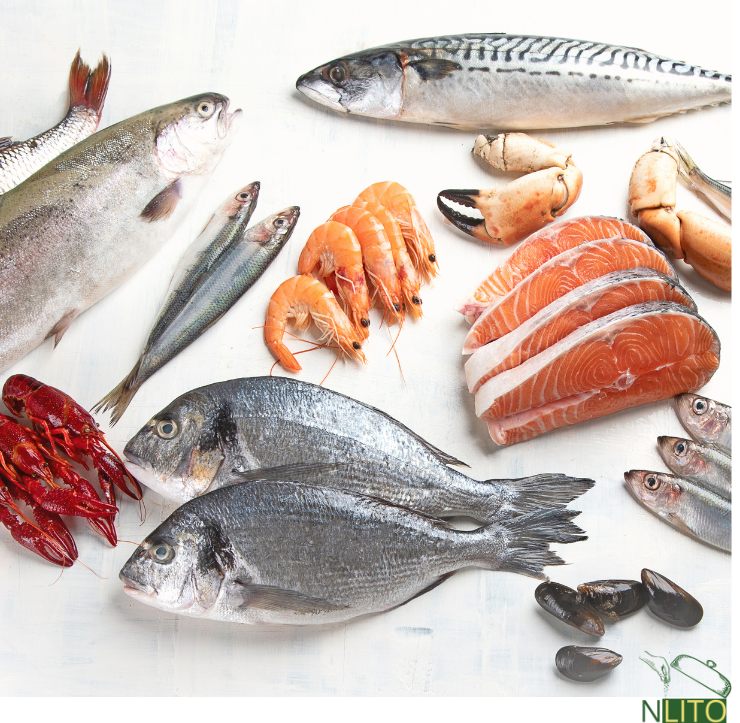
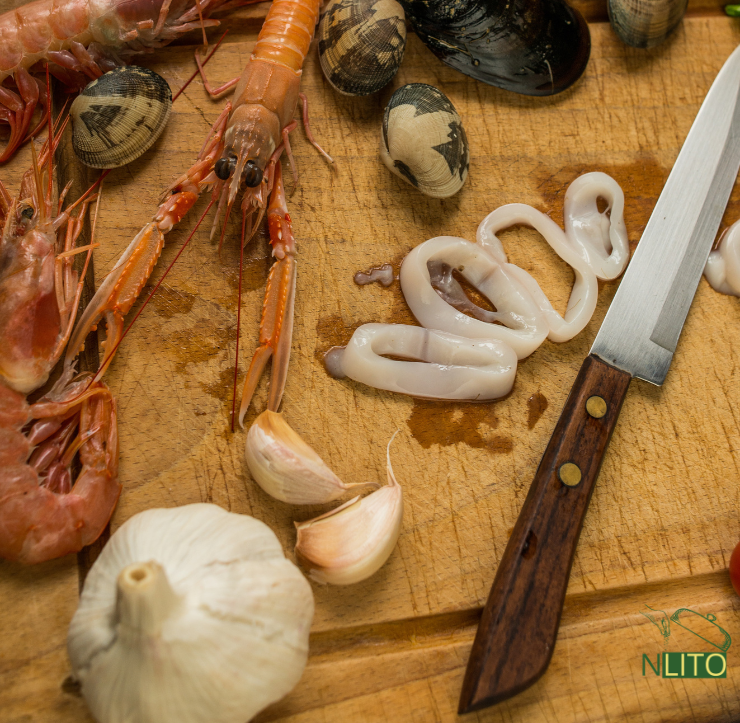
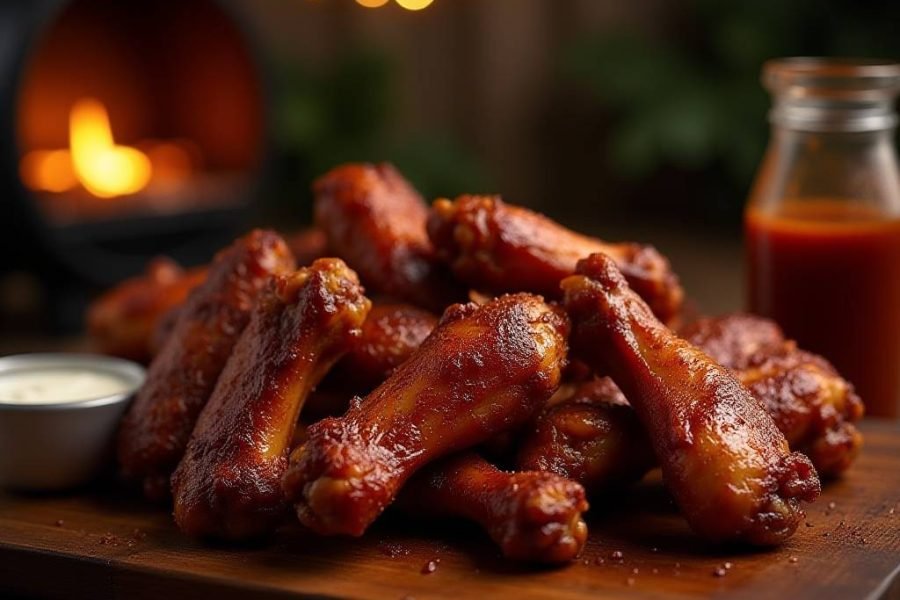
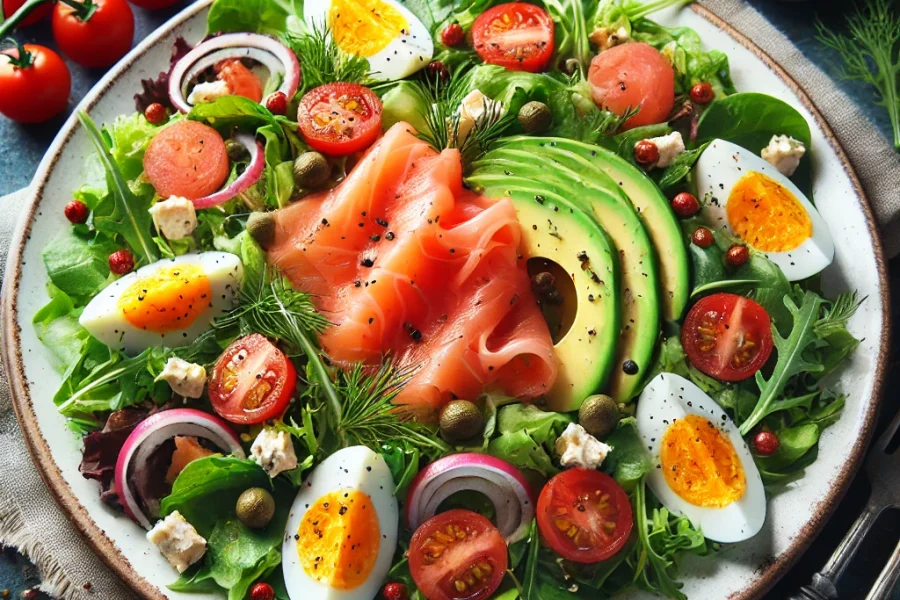
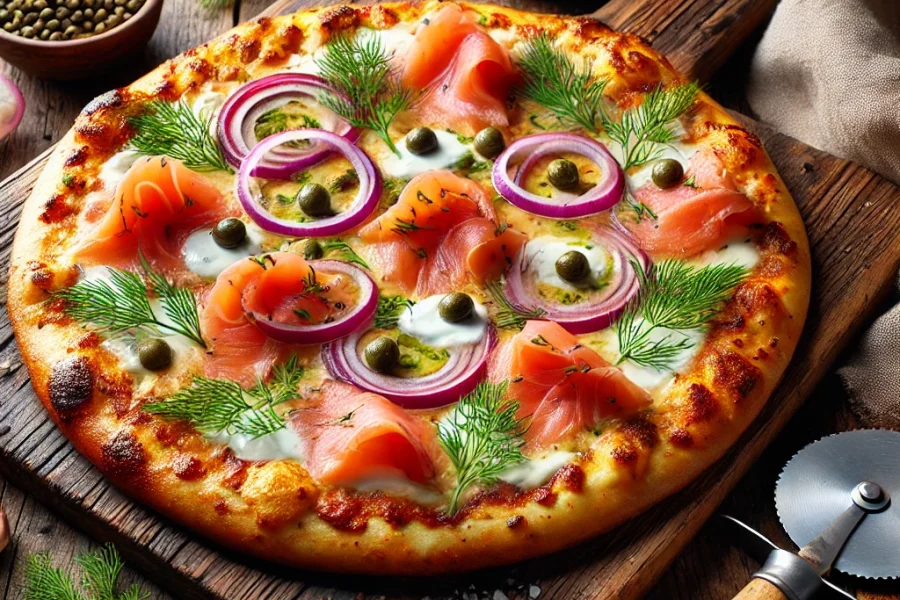

Leave a Comment